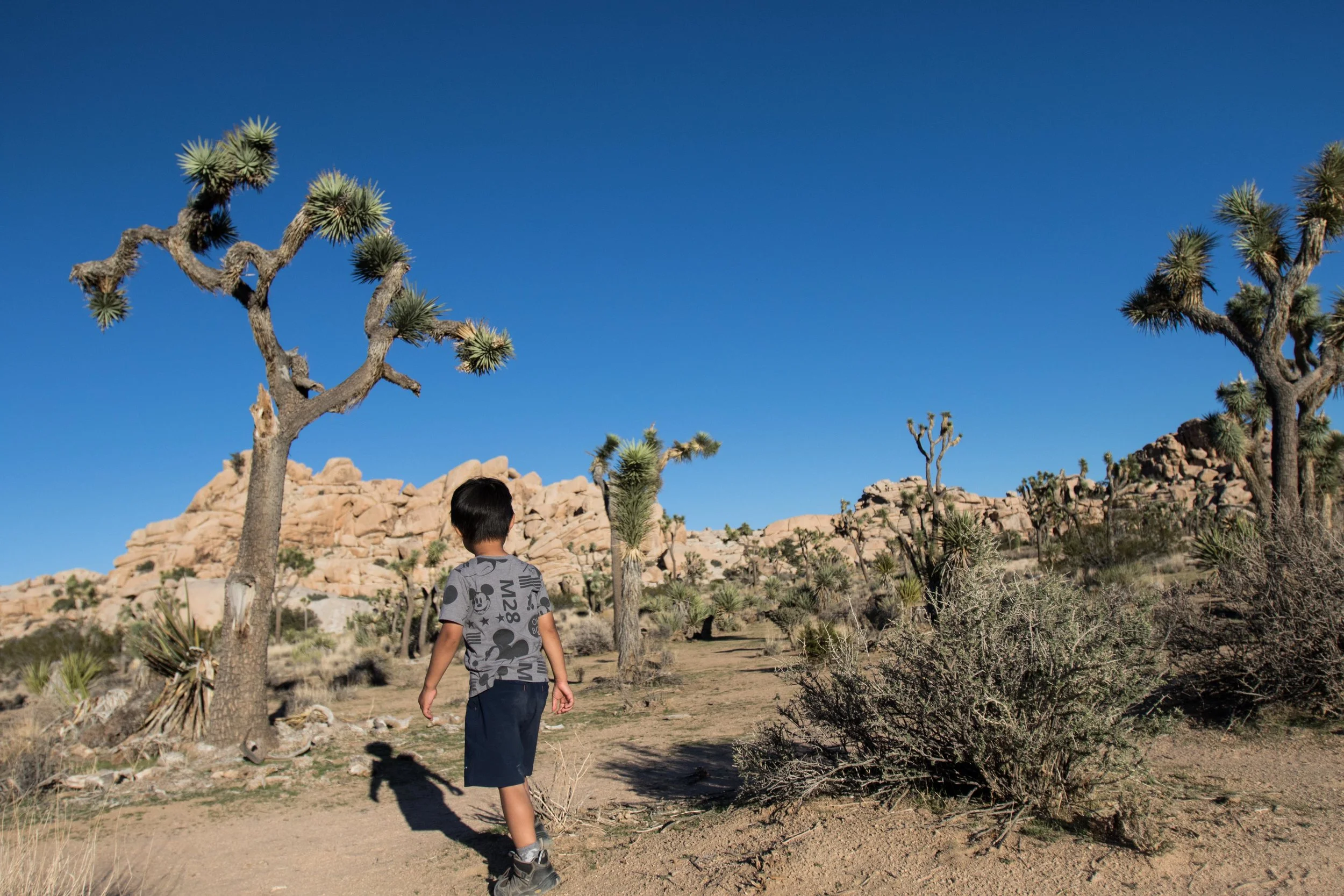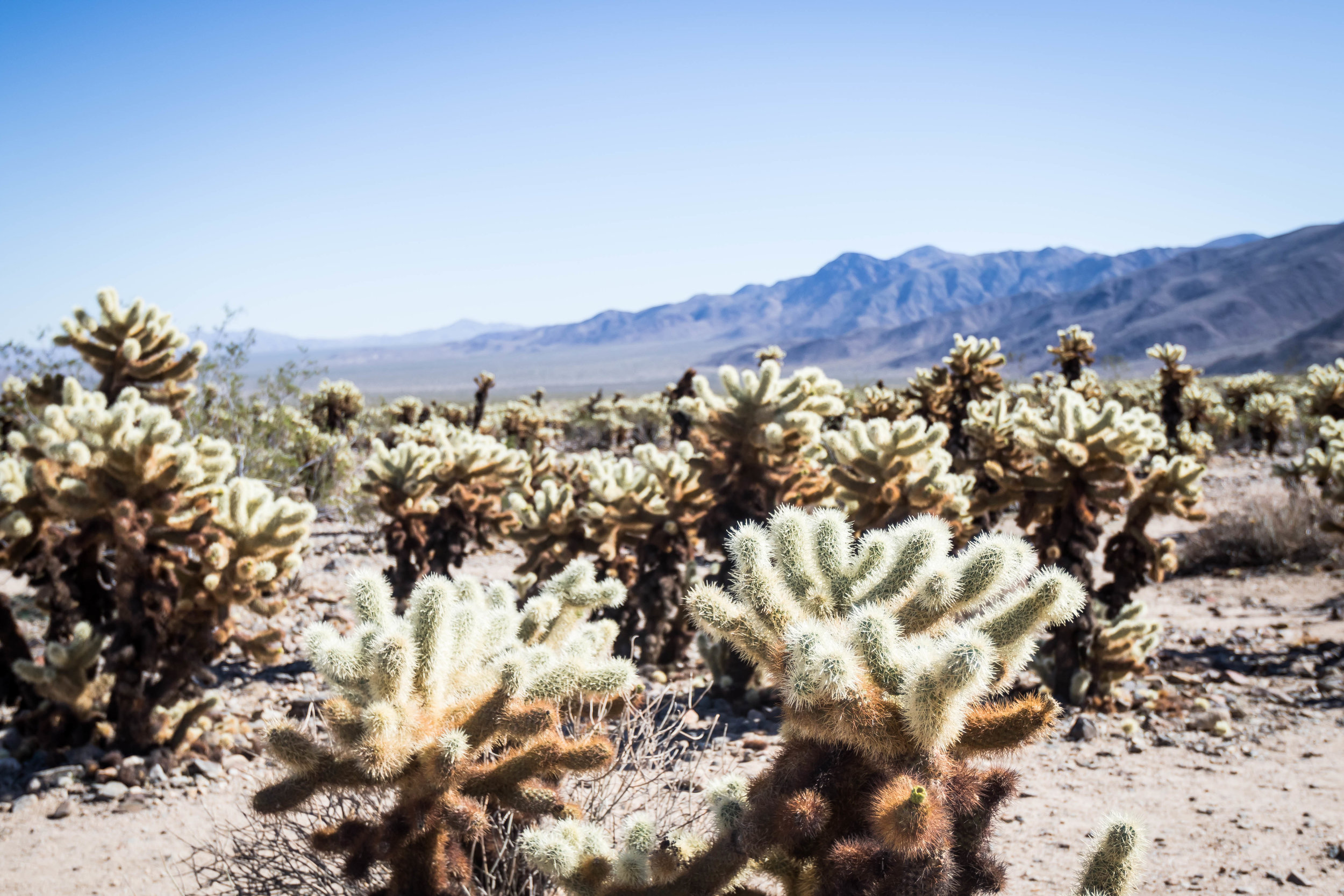Overview
Covering approximately 800,000 acres, Joshua Tree National Park is considered a desert wilderness where the high Mojave Desert meets the low Colorado Desert. This desert can be described as smooth large boulders, rugged mountains and desert plains covered with Dr. Sues’ trees, Joshua trees. Each year, the park welcomes approximately 2.8 million visitors to activities like hiking, camping, day and nigh photography, rock climbing, and the simple pleasure of desert scenery and wildlife.
Accessibility
Joshua Tree is relatively accessible by car and most of the roads inside the park are paved. Joshua Tree is open all year around but the best time to go is during the fall and winter because the weather is cooler than the spring and summer which can be extremely hot, can be up to 120F. We went during November and it was perfect weather around 75-80F during the day and around 60s at night.
Park Highlights
Forty-nine Palms Oasis
Fortynine Palms Oasis – This is a 3 miles round trip with 300-ft of elevation gain each way. At the end of the hike is a rocky canon covered by green palm trees. Even though it was November, temperature throughout the hike felt like mid 80 degrees. It is suggested that you do not attempt this hike when it is hot out.
Barker Dam Hike – This is a 1.1 mile round trip loop that takes you to a man-made water tank/dam that was built by the early cattle ranchers. Although the hike is deep into the park, the entire hike is flat, easy and scenic at the dam.
Cholla Cactus Garden – This is a ¼ mile loop with thousands of concentrated cholla cactus, also known as jumping cactus. Please be very careful not to come close to these cactus and where
Cholla
Keys View – This is a beautiful viewpoint on the Little San Bernardino Mountains that gives visitors a panoramic view of the Coachella Valley. It is popular place to hangout and enjoy both sunrise and sunset.
Skull Rock – Along the main east to west park road is Skull Rock, which is a fun rest stop when driving through the park. Skull Rock can be seen just across the road and there are many fun nature trails all around this rock to explore. Harvey had a blast climbing in between the boulders surround Skull Rock.
Lodging
BLM Site
Joshua Tree BLM – We arrived in Joshua Tree National late Saturday night during what’s considered peak season, the fall and early winter, and therefore could not find a campsite in Indian Cove. We decided to experience our first BLM camping. There are lots of BLM lands near Joshua Tree and you can find them on Google Map. Overall, the BLM near Joshua Tree exceeded our expectation because it was free and there were quiet a bit of other people around us. If you decide to BLM, please make sure your vehicle can handle rocky and sandy roads.
Indian Cove Campground
Indian Cove Campground – We spent the remaining two nights at Indian Cove Campground because the campsites were situated right next to beautiful large boulders. The sunsets at Indian Cove was breathtaking because of how the sun’s colors are reflected off the soft towering boulders surrounding each campsite. There are many campgrounds in Joshua Tree and most have many first come first serve basis campsites. If you are planning to visit during peak season, which is from the fall to spring seasons, please plan to arrive at the campground early to snatch a campsite, especially on the weekends. Please check with the https://www.nps.gov/jotr/planyourvisit/campgrounds.htm for additional information regarding campgrounds in Joshua Tree National Park.
Closest Cities to the Park:
The closest big city to fly into to visit Joshua Tree National Park is Los Angeles.
Recommended Length Stay: At least 3-5 days to hike and explore the majority of the park.
For more photos, they can be found here.





